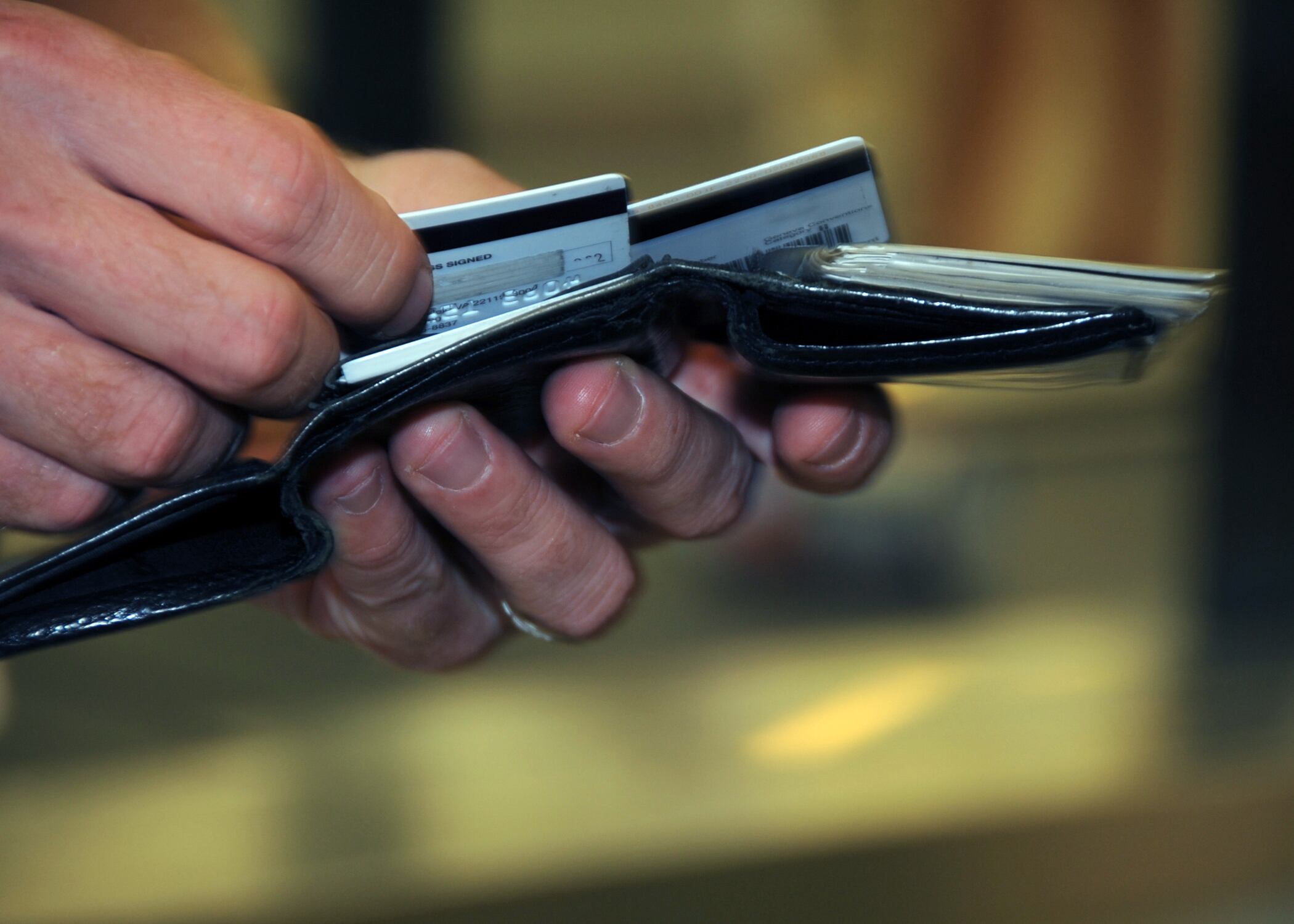It’s been 25 years since female pilots were allowed in combat roles in the Air Force, but it’s taking a little longer for their equipment to catch up.
“What we’re finding is that women have been flying for years wearing gear that’s been designed for men,” Air Force Chief of Staff Gen. Dave Goldfein told Air Force Times during a March 8 editorial board meeting at the Pentagon.
The Air Force wants to change this, with Air Combat Command leading a review “to ensure [equipment] adequately fits both a male and a female’s frame for long periods of time,” Goldfein said.
“Our intent is to look at all of the gear and make sure we have it right,” the chief of staff said.
The review will look at everything from boots to flight suits, he added.
RELATED
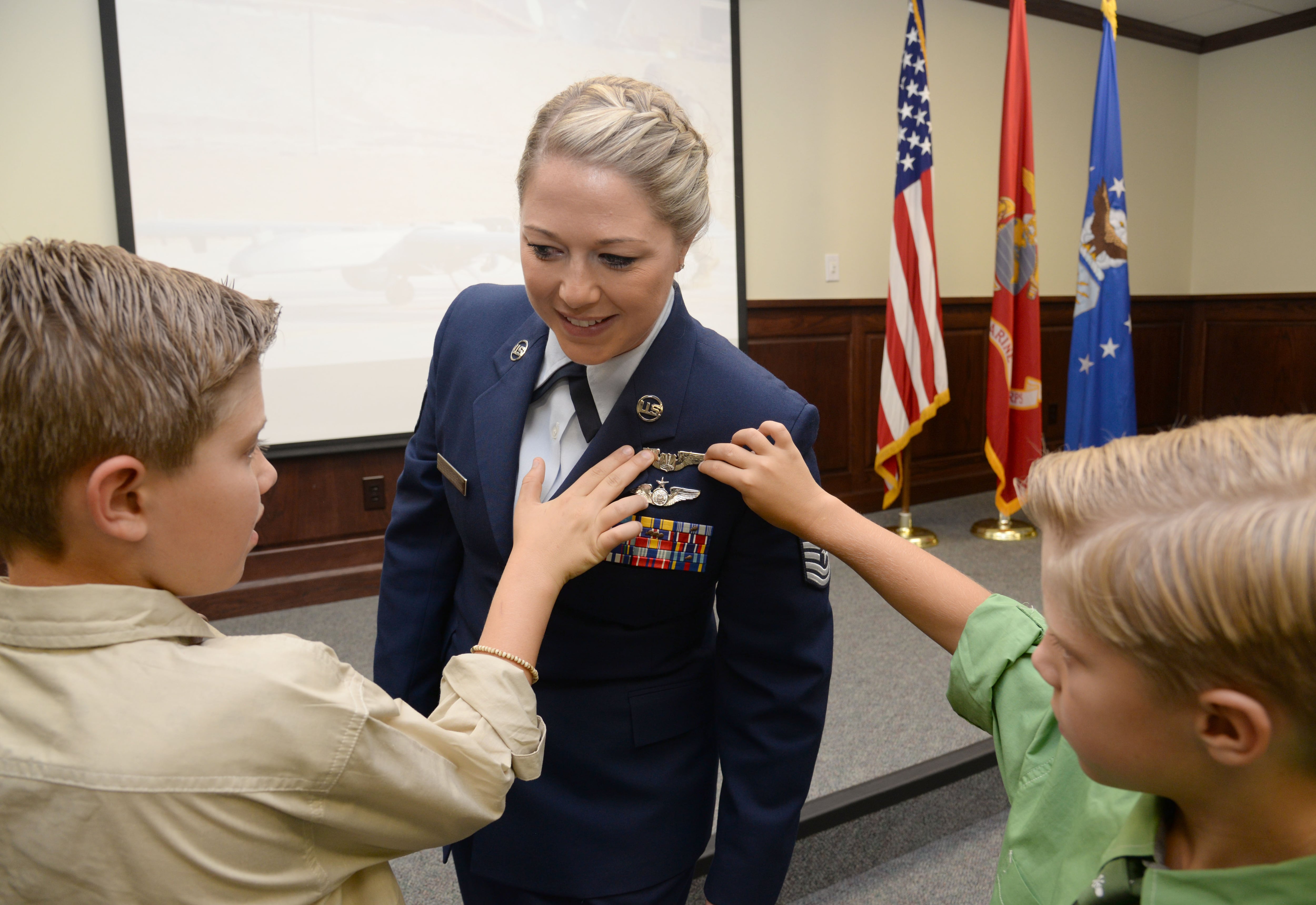
Feedback from female airmen will help identify the shortfalls in equipment, and then the Air Force can look for solutions.
“We are exploring options to reduce long-term health and physical effects attributed to equipment wear during high-G maneuvers or long sortie duration,” according to a spokeswoman with Air Combat Command.
These effects include gear straining a pilot’s neck or back and a heightened risk of injury during ejections from the aircraft, Maj. Docleia Gibson told Air Force Times.
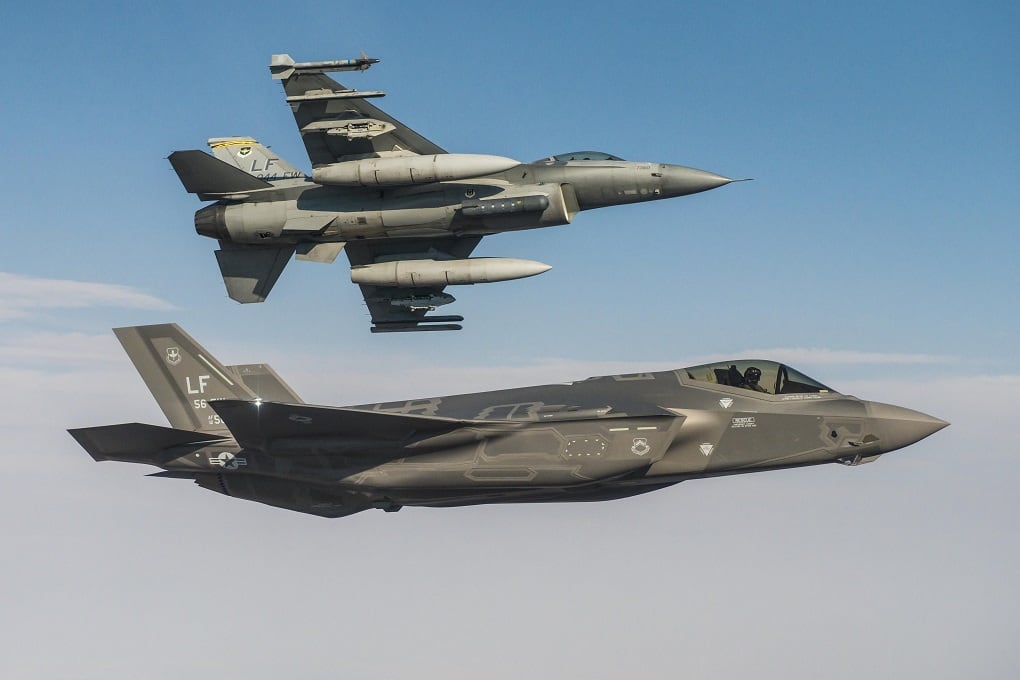
Col. Samantha Weeks, commander of the 57th Adversary Tactics Group at Nellis Air Force Base in Nevada, said the gear has improved since she started flying in 1997, but more still needs to be done.
“When you go back and look historically, the last time that we really had a major update to medical standards was in the 1960s,” Weeks told Air Force Times, referencing that anthropometric data must be updated. “While we build new fighter aircraft and we have new gear, that data is based off the majority of men and percentage that they fit.”
Weeks spent her first 10 years in the Air Force flying the F-15C Eagle, then she flew the F-16 Fighting Falcon for the Thunderbirds, the service’s Air Demonstration Squadron. Since then, she has continued to fly the F-16.
During the fighter pilot’s first assignment, she was given the smallest anti-gravity suit, or G-suit, but it still wasn’t as tight as it should have been.
“I had calf modifications, thigh modifications,” Weeks said. “It was still tightened down to the smallest I could make it.”
Weeks said she has a female pilot friend who’s about 5’6” and weighs 105 pounds.
“There was no way that G-suit was fitting her properly for her to fly an F-15C at 9 Gs,” she said.
The suit helps pilots withstand the acceleration forces put on their bodies while maneuvering fighter jets, but an ill-fitting suit reduces the support a pilot receives when pulling Gs.
“That obviously can be a life or death situation,” Weeks said, adding that a pilot wants the suit to provide support to push against during anti-G straining maneuvers.
“So when you’re pulling 8, 9 Gs in the aircraft, you can keep the blood from rushing to your legs and keep it up in your heart and in your brain so you don’t have a loss of consciousness,” she said.
After talking to other female fighter pilots and air crews, Weeks said they all noted that the survival vest needs to be improved.
The vest holds life-support equipment such as radios and flares, and Weeks said a lot of it is worn in the front.
Goldfein, speaking Thursday at a Defense Writers Group breakfast in Washington, D.C., said these vests need to be arranged correctly in terms of where the equipment goes.
“You’ve got to be able to move inside that cockpit,” he said. “You’ve got to be able to turn, you’ve got to be able to look around.”
The chief of staff said women are wearing men’s vests, and he wants to make sure the weight-bearing side of the vest is suited for both men and women.
“When you’re sitting in the fighter aircraft, the radios of the vest are actually resting on your lap because you can’t make it small enough or tight enough to fit a female stature,” Weeks said.
This causes a different center of gravity that pulls on the shoulders, neck and back.
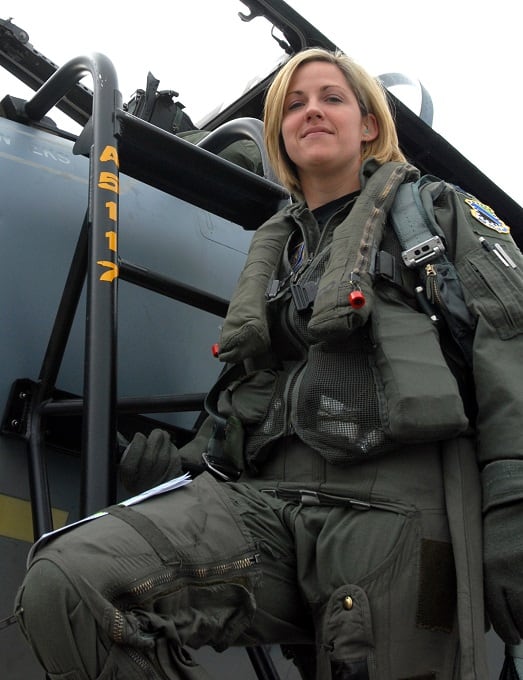
Air Combat Command has reached out to Weeks for her feedback and assistance with the review as the Air Force works on short-term and long-term solutions.
The service wants to consolidate gear in typical female sizes, including flight suits, boots, jackets, G-suits, harnesses, life-support vests and gloves.
“They want to try to put [the gear] in a centralized location so when a woman needs a female flight suit and her local installation doesn’t have it immediately on hand, she can call this 1-800 number or go to a centralized warehouse and very quickly obtain it,” Weeks said.
The goal is to set this up in the next 90 days, and Weeks said ACC commander Gen. Mike Holmes likened the idea to Stitch Fix, an online subscription service that sends clothes in the correct sizes.
“Let’s say I want a 34 female flight suit,” Weeks said. “I can order it quickly and the warehouse will send it to me, and I open up a box of gear that fits me.”
However, developing gear that might not exist yet in sizes that pilots need could take more than a year, she said.
This includes:
- Flight masks that fit female faces.
- Anti-exposure suits with tight wrist and neck seals to keep water out during an ejection.
- Combat harnesses to reduce risk of injury during an ejection.
- Gloves and boots.
The review is expected to take about a year, according to Air Combat Command.
Air Force Secretary Heather Wilson said when she was a young officer, there were real limitations on women flying combat aircraft.
“Seats were designed to accommodate from the 10th to the 90th percentile for American men,” Wilson said during an event in January. “That’s just the way it was. Most equipment was designed that way as well.”
Because this was the standard, the Air Force believed many women didn’t qualify to fly combat aircraft because they weren’t big enough to fit into that spectrum.
“OK, well, why don’t we start designing equipment so that 90 percent of Americans can do the job?” Wilson said. “Well, that takes time. We all understand that, but it’s been a generation, folks.”
Wilson said she was talking to an F-15 pilot who showed the secretary how female pilots are still having problems with flight equipment not designed for women.
“We shouldn’t be at that point almost 30 years after women have been flying combat aircraft,” Wilson said.
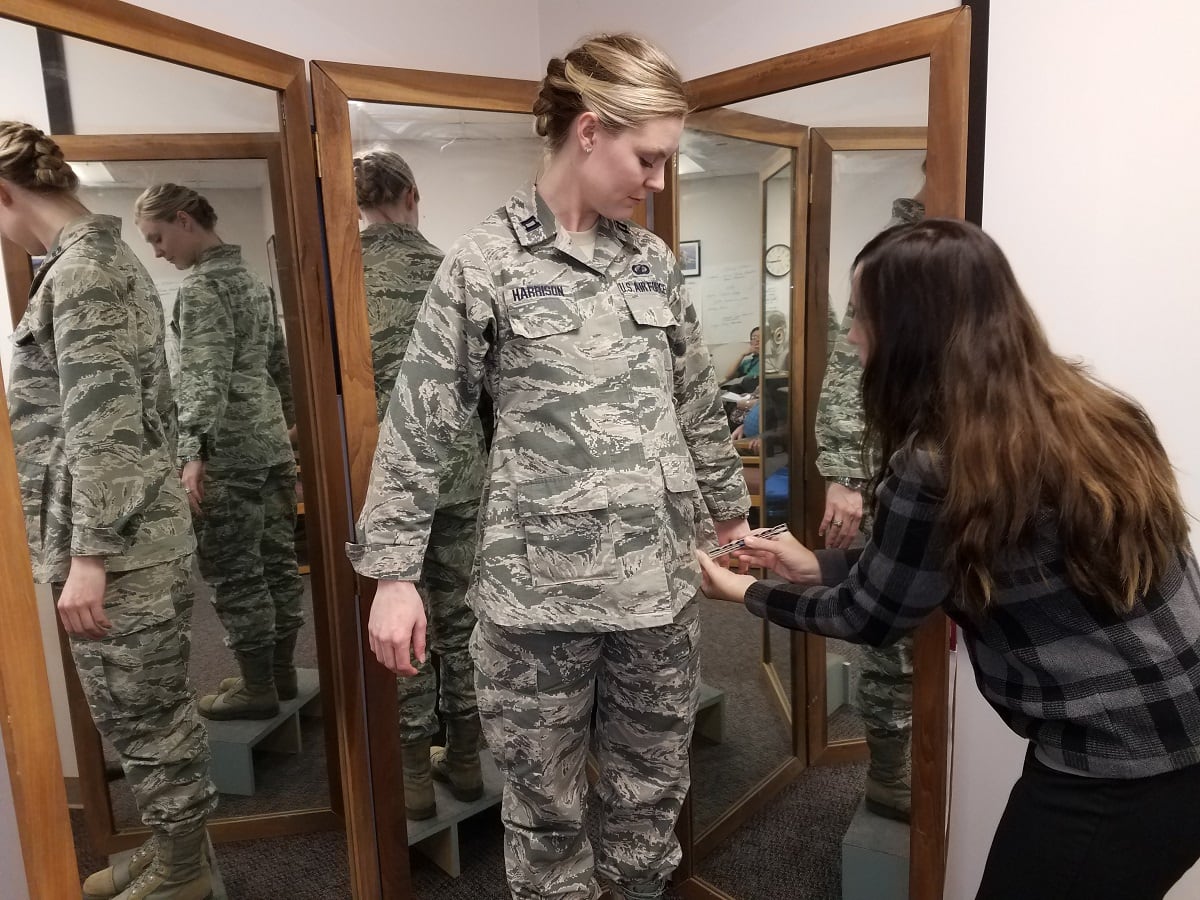
Across the Air Force
It’s not just gear for fighter pilots that the service is looking into.
“We’ve actually asked our A1 team to look at uniforms for women in general, including maternity uniforms and even just standard everyday stuff,” Chief Master Sergeant of the Air Force Kaleth Wright said during the editorial board with Goldfein.
Wright added that he doesn’t think the Air Force — where 20 percent of those serving are female — has done as good a job as it could in making sure there are all types of uniform items and gear designed specifically for female airmen.
“We’ll continue to do a review and try to get that right,” he said. “It’s incredibly important that we have uniforms, not just for aviators, but for all of our airmen.”
Goldfein said he recognizes that female airmen are often paying out of pocket for modifications to their uniforms as they try to turn a uniform designed for a man into one that would fit a woman’s frame.
The service plans on identifying problems and going after the solutions as issues arise, he said.
“We owe them a uniform that fits, that’s functional and that allows them to accomplish the mission,” Goldfein said. “We owe it to women to get this right.”
Charlsy is a Reporter and Engagement Manager for Military Times. Email her at cpanzino@militarytimes.com.




